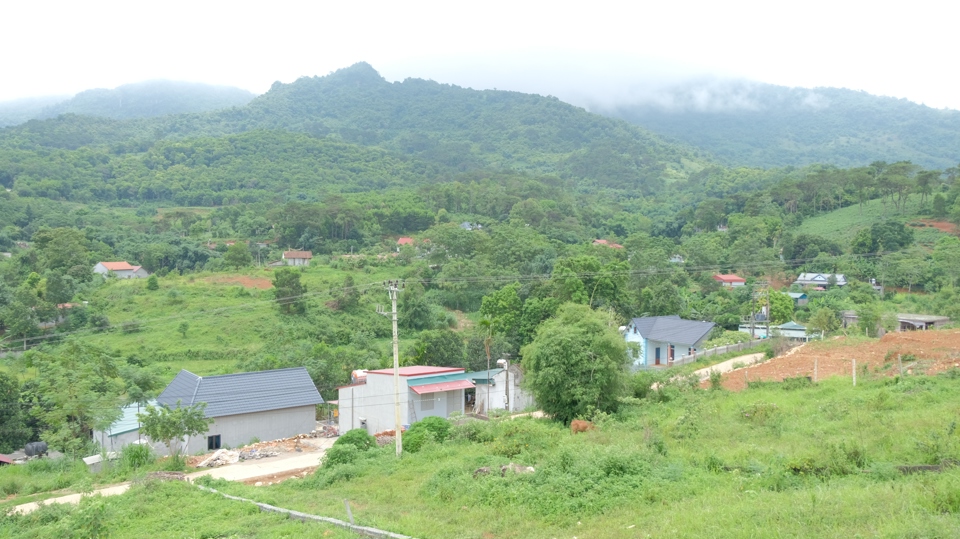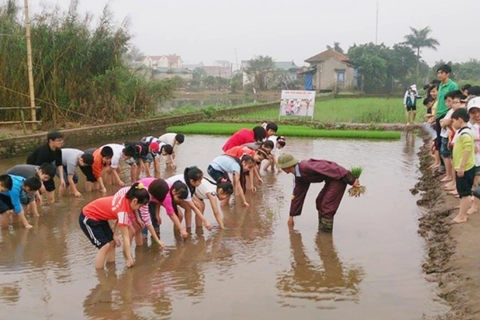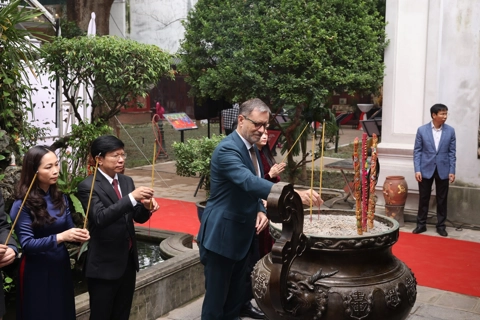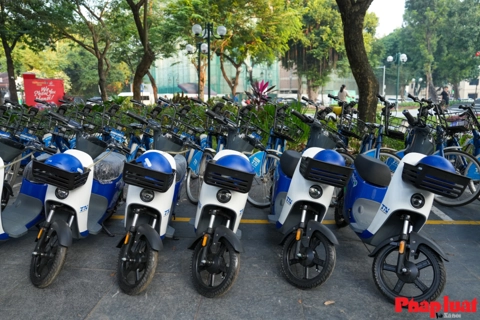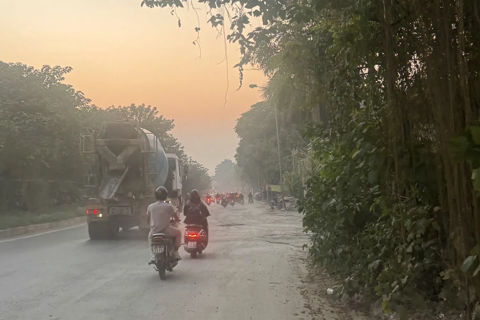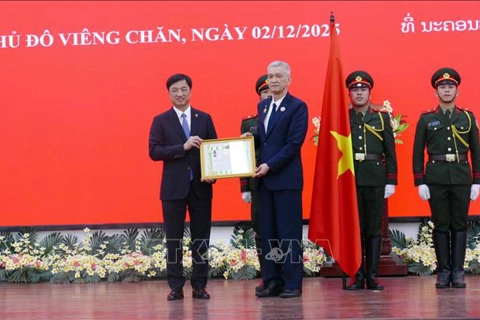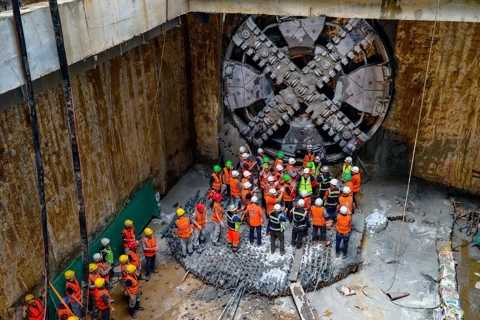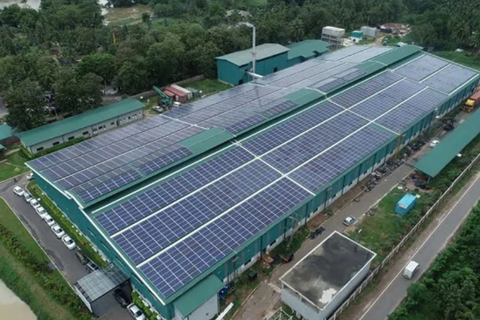Resolution 15 outcomes: Transformation of mountainous ethnic regions (P.1)
Resolution 15 has played a crucial and historically important role in transforming the mountainous ethnic minority areas of the capital, bringing about positive changes and progress.
On May 29, 2008, the 12th National Assembly issued Resolution No.15 on adjusting the administrative boundaries of Hanoi and surrounding provinces/cities, effectively making the mountainous ethnic areas in Ha Tay Province and Luong Son District (Hoa Binh Province) part of the capital.
| A mountainous ethnic minority village in Tien Xuan Commune, Thach That District. Photo: Tung Nguyen/The Hanoi Times |
Hanoi currently encompasses 13 communes and one hamlet in five districts that are home to ethnic minorities and upland dwellers as a result of Resolution 15 of the National Assembly. However, despite being sub-municipal units, many of these places have faced great difficulties due to their weak socio-economic development conditions and poor starting positions. The ethnic minorities in these areas faced serious challenges and shortcomings in their daily lives.
To deal with this situation, the municipal authorities have introduced a series of specific mechanisms and policies aimed at intensifying the comprehensive socio-economic development in mountainous areas.
More than 15 years after Resolution 15, the correctness of this policy has been confirmed. It has played a decisive and historically important role in the transformation of the ethnic minority mountainous areas of the capital, bringing about positive changes and progress.
Underdeveloped infrastructure
Khanh Thuong Commune, located near Ba Vi National Park and along the Da River, is one of the most remote mountainous ethnic regions from central Hanoi.
About 15 years ago, this area was rarely visited due to its long distance and challenging road conditions.
Dinh Thi Hien, a resident of Go Da Che Village in Khanh Thuong Commune, recalled the difficulties people faced when traveling due to the many underground overflows of the road, which often forced them to wade through water. "During the rainy season, the road would become slippery and muddy, posing great risks," she said.
Such challenges made life and production challenging for the people of Khanh Thuong Commune.
Although the locals' main occupation was broom weaving, the long distance from the center made it difficult for them to expand their trade. However, with the expansion of administrative boundaries and the special ethnic policy in place for nearly 15 years, transportation infrastructure has gradually improved, easing the difficulties faced by residents.
West of Hanoi lies Dong Ke Village in Tran Phu Commune, Chuong My District, home to a large ethnic Muong population. In the early stages of the implementation of Resolution 15, Dong Ke Village faced shortages of all kinds, especially electricity, roads, schools, and medical facilities.
Nguyen Viet Dang, a resident of Dong Ke Village, highlighted the hardships villagers face in accessing health care, as they have to travel long distances to reach the commune's central health post. Travel is especially arduous during the rainy season.
Thousands of people in villages and hamlets along Dong Suong Lake and the Ho Chi Minh Trail are no exception. However, the government's initiative to build a second medical station has significantly improved health care in the area, easing the burden on residents.
Meanwhile, access to the national grid has been a long-standing aspiration for ethnic minorities living in Dong Xuan and Phu Man communes in Quoc Oai District. Prior to the implementation of Resolution 15, many families in these areas were without electricity due to their remote location from the city center.
According to Bui Van Thao, former chairman of the Phu Man Commune People's Committee, the scattered nature of ethnic minority settlements made it difficult and costly to connect them to the grid.
"Many families lived in isolated areas until 2015 when access to electricity finally brought about a significant change in the lives of ethnic minorities," Thao said.
Barriers to growth
In Hop Nhat Village, Ba Vi Commune, Ba Vi District, Duong Van Hong, a local, shared his excitement about the positive changes brought about by the field irrigation system, which has drastically improved agricultural conditions for the Yao ethnic people.
In the past, due to the small and fragmented rice-growing areas in the difficult topography near Ba Vi National Park, households could only grow one crop. But with improvements in irrigation, they can now grow crops up to three times a year, significantly boosting local agriculture, Hong said.
Not all areas have seen such progress, however. In Thanh Ha Village, An Phu Commune, My Duc District, as described by resident Le Van Tien, the complex mountainous terrain makes farming particularly difficult. The lack of adequate investment in irrigation has led to water shortages during the dry season and destructive flooding during the rainy season, affecting local crop yields.
Similar economic development challenges exist in Yen Trung Commune, Thach That District. This area was once part of the mountainous Luong Son District in Hoa Binh Province. Since its incorporation into the capital, many ethnic Muong households in Yen Trung Commune still face difficulties in determining viable agricultural activities for their livelihoods.
As a region with a significant Muong ethnic population, Yen Trung Commune faces limitations in agricultural techniques, with mechanization still a distant concept for the local people. According to Nguyen Van Lich, Vice Chairman of the Yen Trung Commune People's Committee, the lack of adequate investment and modernization in transportation and irrigation systems has resulted in inadequate rice production, which barely meets the community's food needs. The lives of ethnic minorities in the area continue to be deprived in many ways.
Those under special hardship
Ba Vi Commune, located on the edge of Ba Vi National Park, has made a remarkable journey towards poverty reduction. Almost 15 years ago, during the initial implementation of Resolution 15, Ba Vi Commune was classified by the government as an extremely difficult village and commune.
More than 30% of households were underprivileged, and nearly 50% of households were classified as near poor.
Former Ba Vi Commune People's Committee Chairman Duong Trung Lien said poverty prevented many households from upgrading their homes, resulting in temporary and dilapidated housing.
Despite the seemingly unattainable goal of building a new rural area for Ba Vi Commune, the community achieved this remarkable feat by early 2022, becoming the last locality in Hanoi to complete this national target program.
Similarly, in An Phu Commune, My Duc District, six out of 13 villages were classified as extremely difficult in 2008, with more than 38% of households living in poverty in 2016, based on the 2016-2020 criteria. The per capita income was only VND19 million (US$803) per person per year.
Following the expansion of the capital's administrative boundaries, Hanoi now includes 13 communes and 1 village in 5 districts inhabited by ethnic minorities. Among them, one commune and many villages are classified as Region III, which faces special difficulties.
Nguyen Tat Vinh, former head of Hanoi's Department of Ethnic Minority Affairs, said that despite some previous investment by the former authorities of Ha Tay Province and Luong Son District (Hoa Binh Province), the socio-economic infrastructure in the villages and communes of the mountainous ethnic minority areas remains inadequate and weak.
The limited economic development conditions continue to pose challenges, making the lives of the people in general difficult. This poses a complex development problem for Hanoi in implementing National Assembly Resolution 15.
(to be continued…)

